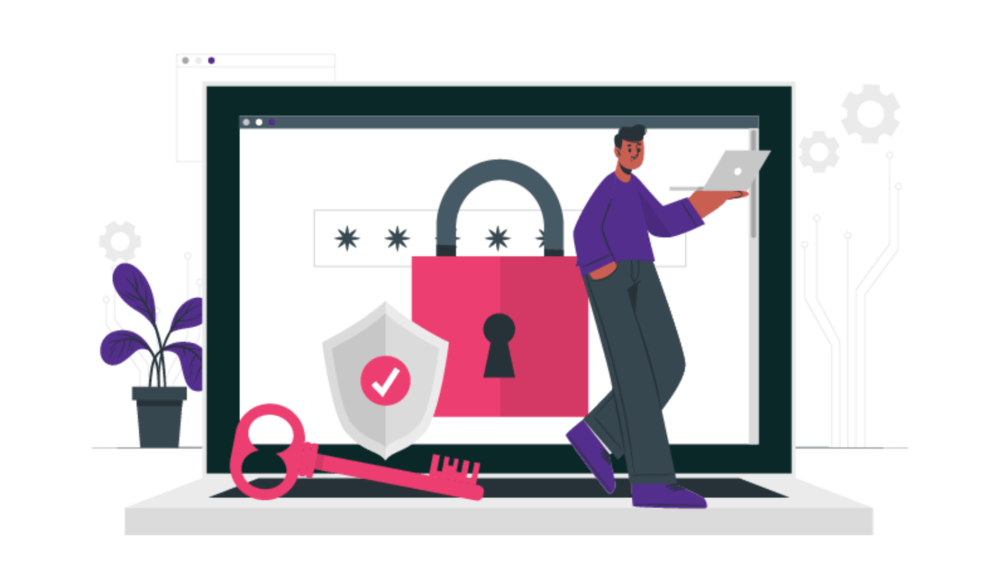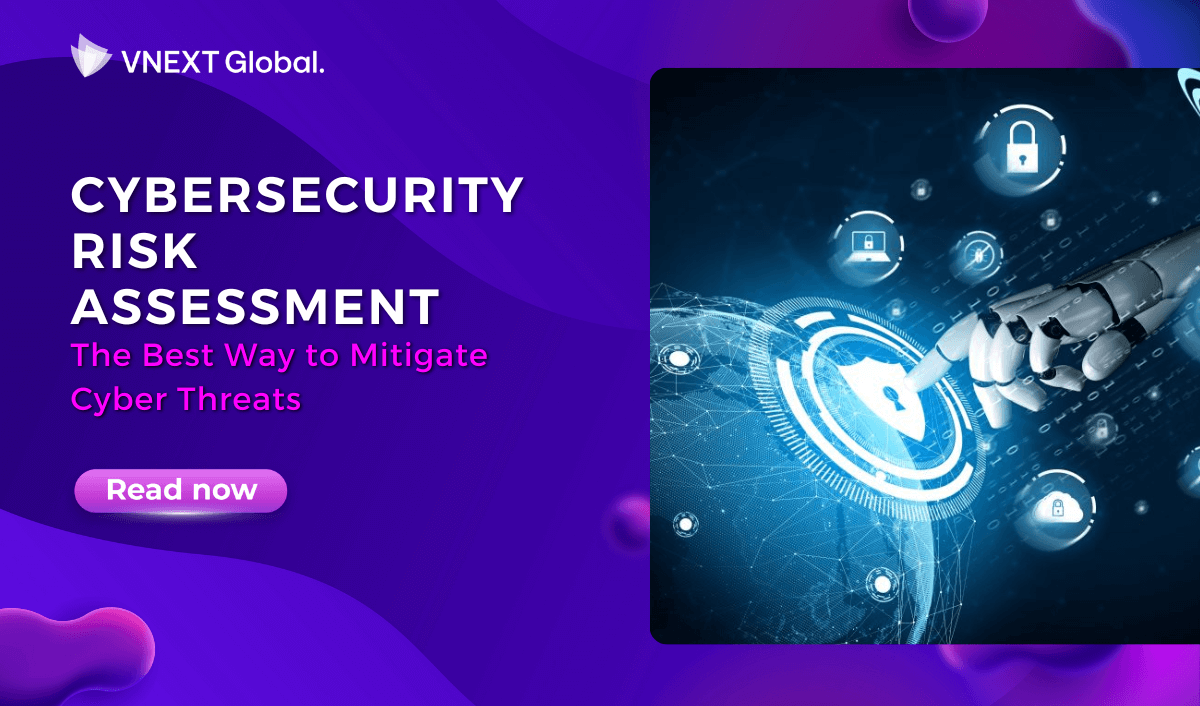Cybersecurity Risk Assessment: The Best Way to Mitigate Cyber Threats
Cybersecurity risk assessment is unquestionably the best way for firms to anticipate and mitigate cyber dangers, especially when the prevalence of cybercrime rises at an unparalleled rate. According to Cybersecurity Ventures, the yearly cost of cybercrime is expected to rise by 15% every year, reaching $10.5 trillion USD by 2025.
The loss caused by cybercrime has shook many organizations, forcing them to take real steps to address these concerns. To resolve these challenges, cybersecurity risk assessment is a viable choice for businesses of all sizes; yet, not many businesses understand how to successfully assess cyber threats. This blog article aims to address these growing challenges by providing definitions, examples, steps, and methodologies for efficiently assessing cybersecurity risk.
1. What is a Cybersecurity Risk Assessment? Examples:
A cybersecurity risk assessment is a systematic evaluation of potential vulnerabilities and threats to an organization's digital assets, such as networks, systems, applications, and data. Its primary purpose is to identify and analyze risks, determine their potential impact, and develop strategies to mitigate or manage them effectively.
Let's consider a few examples to understand the significance of cybersecurity risk assessments:
a. Example 1: Financial Institutions
Statistics reveal the critical need for cybersecurity risk assessments in the financial sector. According to the 2021 Verizon Data Breach Investigations Report, 448 incidents were reported in the finance and insurance sector, with 34% of those incidents involving confirmed data breaches. These breaches can result in severe financial losses, damage to reputation, and regulatory non-compliance. Conducting a cybersecurity risk assessment allows financial institutions to proactively identify vulnerabilities and take appropriate measures to safeguard customer data and financial systems.
b. Example 2: Healthcare Industry
The healthcare industry holds vast amounts of sensitive patient data, making it an attractive target for cyberattacks. In 2020, the healthcare sector experienced a surge in cyber threats, with a staggering 45% increase in reported breaches compared to the previous year, as reported by the HIPAA Journal. A comprehensive cybersecurity risk assessment in the healthcare industry can help identify weaknesses in systems, address vulnerabilities, and implement robust security controls to protect patient privacy and prevent disruptions to critical healthcare services.

2. The 5 Steps to Cybersecurity Risk Assessment:
Effective cybersecurity risk assessment follows a systematic approach. Here are the five essential steps involved:
Step 1: Identify and categorize assets:
Begin by identifying and categorizing the digital assets and resources within your organization. This may include networks, systems, applications, databases, intellectual property, and customer data. Categorizing assets helps prioritize risks and allocate appropriate resources for protection.
Step 2: Identify threats and vulnerabilities:
Identify potential threats that could exploit vulnerabilities in your digital assets. Threats can include external factors like hackers, malware, and phishing attacks, as well as internal factors like unauthorized access or human error. Additionally, assess vulnerabilities in your systems, such as outdated software, weak access controls, or unpatched vulnerabilities.
Step 3: Assess potential impact:
Evaluate the potential impact of identified threats and vulnerabilities on your organization. Consider the consequences in terms of financial loss, reputational damage, operational disruption, regulatory non-compliance, or legal implications. This step helps prioritize risks based on their potential impact.
Step 4: Determine likelihood:
Determine the likelihood of each identified risk materializing. Consider historical data, industry trends, and known vulnerabilities to assess the probability of an incident occurring. This step helps quantify the risk level associated with each identified threat.
Step 5: Develop risk mitigation strategies:
Based on the identified risks, their potential impact, and likelihood, develop a comprehensive risk mitigation plan. This plan should include specific measures to reduce or eliminate risks, such as implementing robust security controls, conducting regular vulnerability assessments, employee training, and establishing incident response protocols.

3. How is Security Risk Measured? The Risk Assessment Formula for Cybersecurity:
Security risk is measured by combining the likelihood of an incident occurring with the potential impact it may have. The formula for cybersecurity risk assessment typically involves multiplying the likelihood by the impact, resulting in a risk rating or score. This rating helps prioritize risks and allocate resources accordingly.
Risk Assessment Formula:
|
Risk = Likelihood x Impact |
Let's delve deeper into each component:
a. Likelihood:
Likelihood refers to the probability of a particular risk event occurring. It takes into account various factors, including historical data, industry trends, threat intelligence, and vulnerability assessments. By analyzing these factors, organizations can estimate the likelihood of a risk materializing. Likelihood is often expressed as a numerical value or as a qualitative rating (e.g., low, medium, high).
b. Impact:
Impact represents the potential consequences or damage that could result from a risk event. The impact can be categorized into various dimensions, such as financial, operational, reputational, regulatory, or legal. Assessing the impact involves evaluating the severity of the potential consequences. Similar to likelihood, impact can be quantified using numerical scales or qualitative ratings.
By multiplying the likelihood and impact values together, organizations can calculate a risk rating or score. This score helps prioritize risks based on their severity and guides decision-making processes. The risk rating can be represented using a numerical scale or color-coded system, such as low, medium, or high risk.
It is important to note that risk assessments are not a one-time process. The cybersecurity landscape is dynamic, with new threats emerging and technology evolving rapidly. Therefore, organizations should conduct regular risk assessments to adapt to changing risks and ensure their security posture remains robust.

Final Thoughts:
Cybersecurity risk assessment is a crucial practice for organizations and individuals in today's digital landscape. By conducting a thorough assessment, organizations can identify vulnerabilities, evaluate potential threats, and develop effective risk mitigation strategies. The five-step process of asset identification, threat and vulnerability assessment, impact evaluation, likelihood determination, and risk mitigation planning provides a systematic approach to cybersecurity risk assessment.
Moreover, measuring security risk involves combining the likelihood and impact of potential incidents to calculate a risk rating or score. This helps prioritize risks and allocate resources based on their severity.
As cyber threats continue to evolve, conducting regular and comprehensive cybersecurity risk assessments becomes increasingly essential. By staying proactive in identifying and mitigating risks, organizations can enhance their security posture, protect sensitive information, and minimize the potential impact of cyber incidents.
In the digital age, where data breaches and cyberattacks are on the rise, investing time and resources in cybersecurity risk assessment is a prudent step towards safeguarding our digital assets and maintaining trust in an increasingly connected world.
If you are looking for a trusted IT partner, VNEXT Global is the ideal choice. With 14+ years of experience, we surely can help you to optimize your business digitalization within a small budget and short time. Currently, we have 400+ IT consultants and developers in Mobile App, Web App, System Development, Blockchain Development and Testing Services. We have provided solutions to 600+ projects in several industries for clients worldwide. We are willing to become a companion on your way to success. Please tell us when is convenient for you to have an online meeting to discuss this further. Have a nice day!












